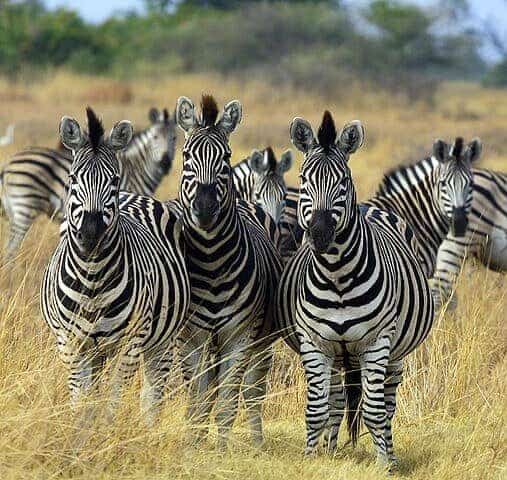Researchers have documented the longest-known terrestrial migration of wildlife in Africa – up to several thousand zebra covering a distance of 500km (more than 300 miles) – according to World Wildlife Fund (WWF).
Using GPS collars on eight adult Plains zebra (Equus quagga), WWF and Namibia’s Ministry of Environment and Tourism (MET), in collaboration with Elephants Without Borders (EWB) and Botswana’s Department of Wildlife and National Parks, tracked two consecutive years of movement back and forth between the Chobe River in Namibia and Botswana’s Nxai Pan National Park, a straight-line distance of 250km (500km round-trip). The findings are detailed in the study, A newly discovered wildlife migration in Namibia and Botswana is the longest in Africa, published today in the journal, Oryx.
The discovery comes at a time when migrations of a diverse range of species around the world are increasingly imperiled, and zebra migrations in other parts of Africa have been disrupted by physical barriers such as fences.
“This unexpected discovery of endurance in an age dominated by humans, where we think we know most everything about the natural world, underscores the importance of continued science and research for conservation” said Dr. Robin Naidoo, senior conservation scientist at WWF.
The potential conservation implications of the study are considerable. The observed migration takes place entirely within the Kavango Zambezi Transfrontier Conservation Area (KAZA) – the world’s largest multi-country conservation area. Spanning 109 million acres across Namibia, Botswana, Zimbabwe, Zambia and Angola, KAZA exemplifies the kind of large landscape conservation approach that will be necessary to preserve the world’s remaining great terrestrial migrations.
“The findings of this study emphasize the importance of trans-frontier conservation areas in conservation of the greater landscape” said Pierre Du Preez, Chief Conservation Scientist at MET in Namibia. “This study has played a crucial role in helping determine a key wildlife corridor in KAZA.”
“At a time when conservation news is inherently rather negative, the discovery of this unknown natural phenomenon should resonate with people around the world. The government’s commitment to secure key migratory corridors serves to underpin the growing wildlife tourism industry. We plan to continue monitoring the migration to try and conserve such increasingly rare natural events” said Dr. Mike Chase, EWB’s founder.
Continued long-term research will be needed to confirm that this is an annual and fixed migration, and whether this is genetically coded or passed behaviorally from mothers to offspring.
If our reporting has informed or inspired you, please consider making a donation. Every contribution, no matter the size, empowers us to continue delivering accurate, engaging, and trustworthy science and medical news. Independent journalism requires time, effort, and resources—your support ensures we can keep uncovering the stories that matter most to you.
Join us in making knowledge accessible and impactful. Thank you for standing with us!

